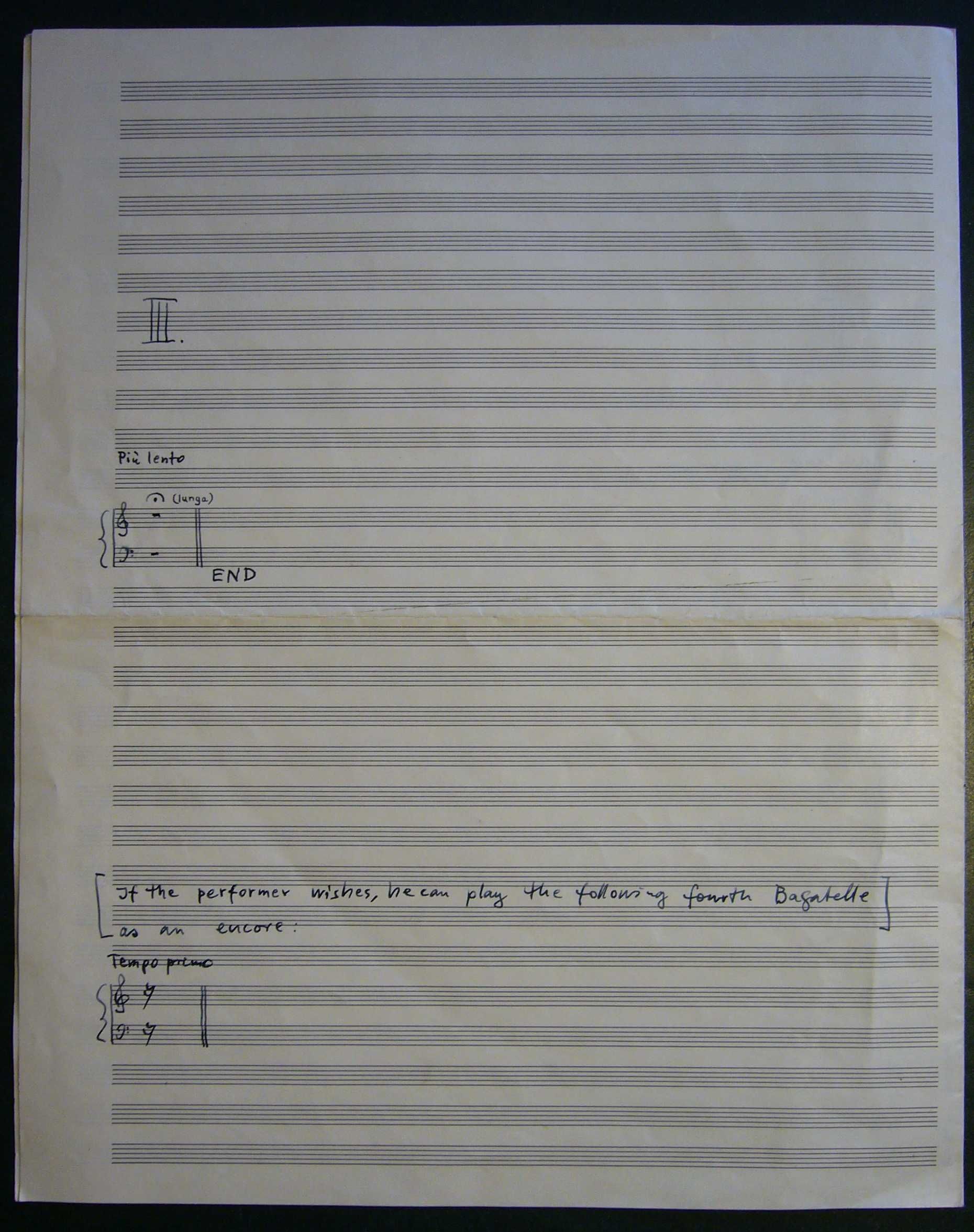György Ligeti
György Ligeti was born on 28 May 1923 in Diciosanmartin (at that time Kingdom of Romania, today called Tarnaveni in Romania). He attended a Hungarian elementary school in Cluj, then a Romanian high school. His parents allowed him to take piano lessons in 1936, and after just one year, he attempted his first symphonic compositions. After graduating from high school in 1941, he wanted to study physics and mathematics, but was rejected because of his Jewish background. Ligeti began musical studies with Sándor Veress, Pál Járdányi, Lajos Bárdos, and Ferenc Farkas in music theory and organ at the Cluj Conservatory. He later continued his studies in Budapest but had to interrupt them when he was drafted into the Hungarian army for labor service in 1944. Ligeti was taken prisoner by the Soviets, from which he managed to escape during a bombing raid on the camp. After the war, he resumed his studies and completed them in 1949.
For a year, he worked as an ethnomusicologist on Romanian folk music, then returned to his former school in Budapest, this time as a teacher of harmony, counterpoint, and music analysis. After the end of the Hungarian Revolution, he fled to Vienna in December 1956. Ligeti later took Austrian citizenship. From 1957 to 1958, Ligeti worked in the Studio for Electronic Music of the West German Radio in Cologne, where he met important representatives of the avant-garde, including the composers Karlheinz Stockhausen and Gottfried Michael Koenig, pioneers of electronic music at the time. From 1969 to 1972, Ligeti lived in Berlin and was a scholarship holder of the German Academic Exchange Service from 1969 to 1970. From 1973 to 1989, he was Professor of Composition at the Hamburg University of Music and Theatre. Notable students include Michael Daugherty, Hans-Christian von Dadelsen, James Horner, and Unsuk Chin.
György Ligeti died on 12 June 2006 in Vienna (Austria).
György Ligeti is considered one of the most important and most influential composers of the 20th century. Therefore I only provide a short biography here and suggest other websites for a better presentation and a complete work list.
Trois Bagatelles
In my possession is the autograph manuscript of the work "Trois Bagatelles" for piano by György Ligeti. The work was composed in 1961 and belongs to the short Fluxus period of György Ligeti. That means the three Bagatelles are not traditionally composed pieces but consist of only one note for each Bagatelle.
To understand this one has to remember the idea of the Fluxus movement: Fluxus negated the idea of a "finished product" in art. In contrast it focused on the process of creating art, involved different art forms resulting into multimedia-based compositions and tried to break the boundary between artist and audience. Often Fluxus performances satirized traditional art settings and tried to disturb the expectations of the audience.
The Trois Bagatelles were first performed by Karl-Erik Welin at the Fluxus Festival in Wiesbaden on 26 September 1962. My copy came from the estate of Welin, a second copy is archived at the Paul Sacher Stiftung. The work was published by Schott in 1965.



